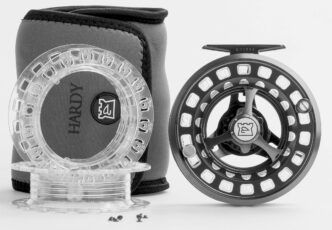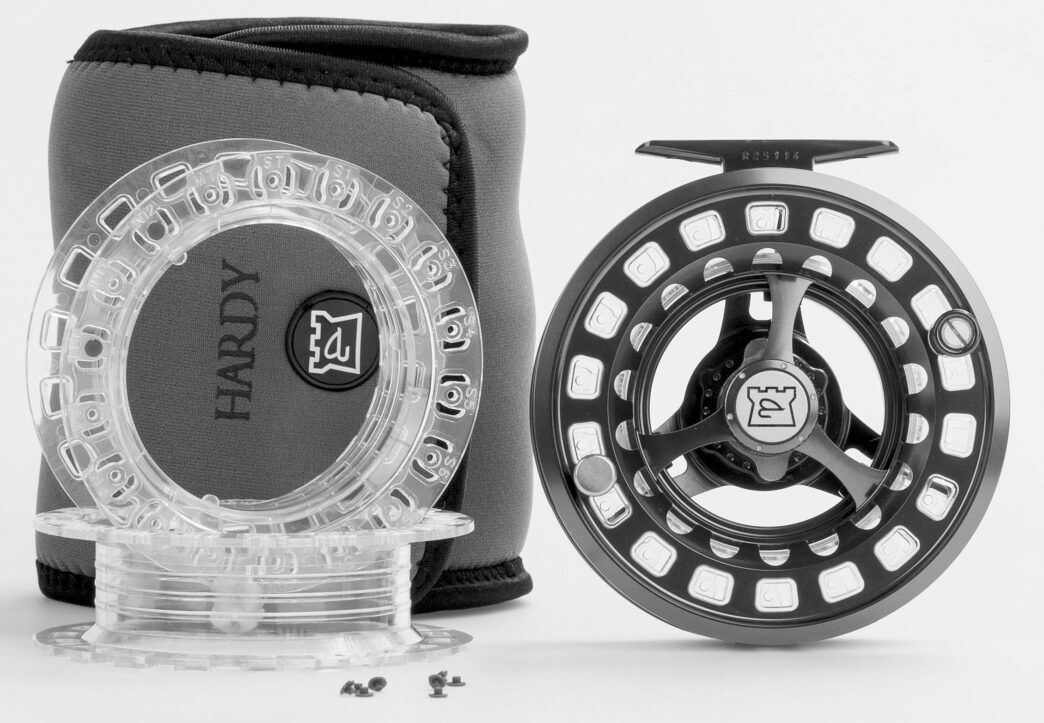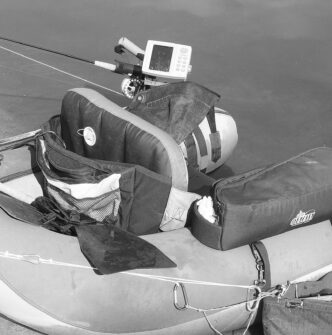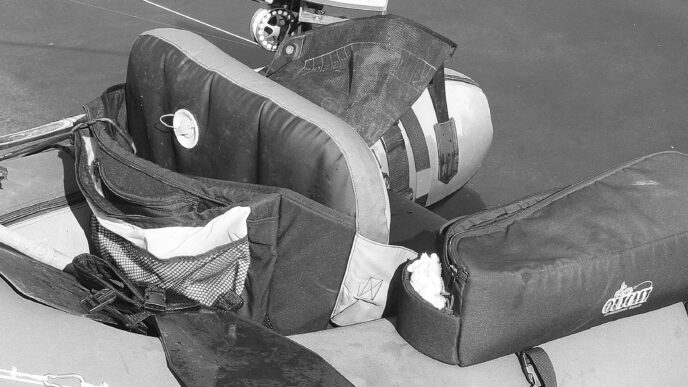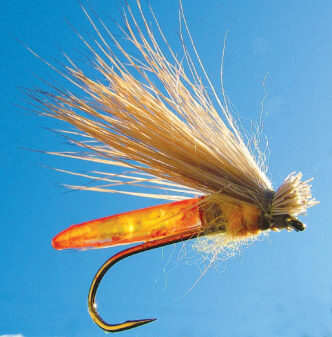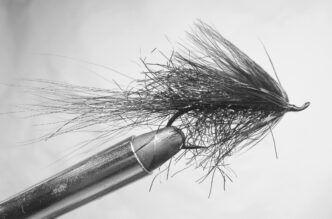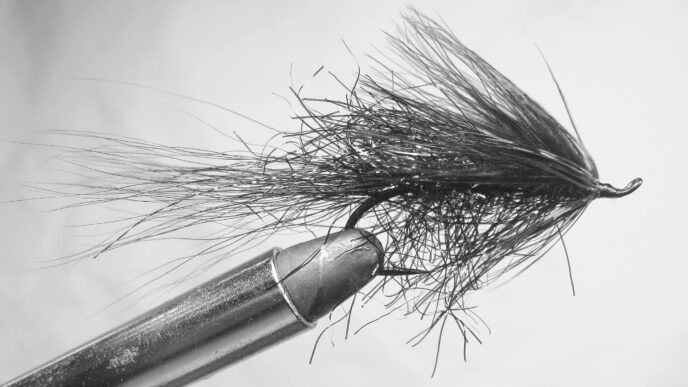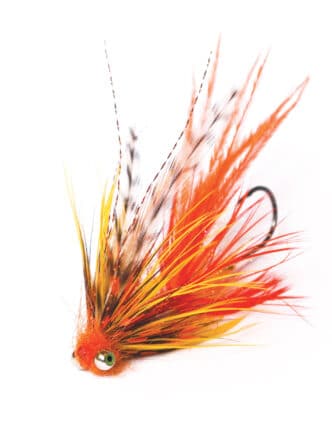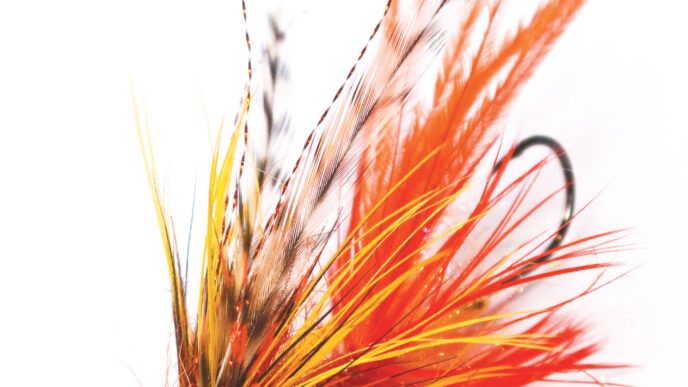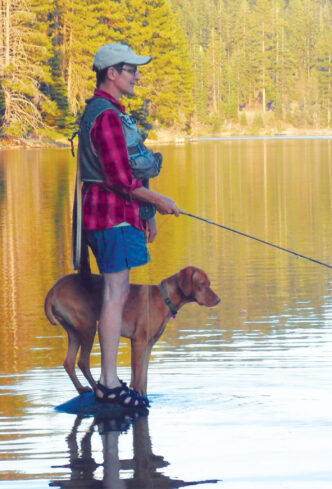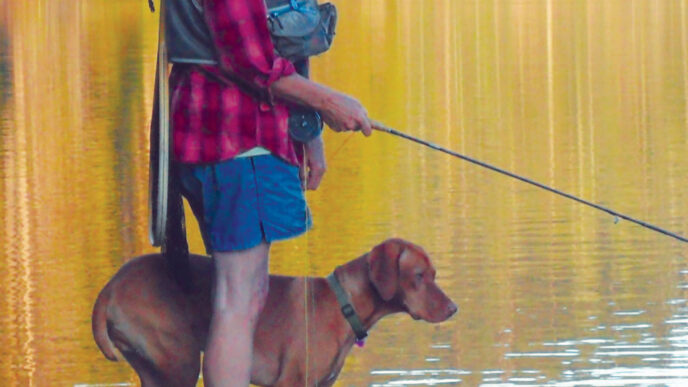The general trout season is over, but there is always someplace in California to chase fish with a fly. And of course, the fly-fishing industry is busy improving what was already good and inventing what’s intended to be even better. Here’s a rundown of new fly reels and fly lines that were introduced last August at the International Fly Tackle Dealer Show in Reno.
New Fly Reels
Hardy may have come up with one of the best cassette reels ever in the new Ultralite CLS, an elegant-looking large-arbor reel that uses easily interchangeable and affordable polycarbonate cassettes instead of traditional extra spools. The CLS is named for its centralized locking system, which captures the cassette on the inner circumference of the reel. Flick a switch one way to lock, the other to unlock. There’s nothing second rate here: the frame is hogged out of 6061 bar-stock aluminum, and the reel has a very good disc drag and toolless right-to-left-hand conversion. It also has a unique line-marking system involving colored removable pins that you stick into numbered and lettered slots on the inside of the spool to indicate line weight and float or sink profile. That sounds odd in print, but it looks like it will work fine. Two sizes are offered, at 4.1 inches in diameter for 5-weight through 7-weight lines and 4.3 inches in diameter for 7-weights through 9-weights. You get a lot of reel for (relatively) little dough at $259 for the reel and three spools.
Hardy has also resurrected more of their iconic Perfect series, this time three wide-spool models in sizes from 2-7/8 inches to 3-3/8 inches, all priced at $599. These reels, like the now-discontinued standard Perfects that were introduced a couple of years ago, are machined and put together, should you be fishing where the trout care about such things, in England, rather than in Korea. They’re deep anodized in a dark gunmetal gray that, to my eye, has hints of green in it — classy, as well as classic.
And while we’re on the subject of classic fly reels, Abel has come up with an elegant trout reel for 4-weight to 6-weight lines, named, not surprisingly, the Abel Classic. It’s available in either solid or ventilated-spool versions in Abel’s superlative black anodized finish, with a palming rim and an external knob on the frame side that adjusts the click drag. The Classic is 3.3 inches in diameter and holds a weight-forward 5-weight line and 175 yards of 20-pound backing. It’s not inexpensive at $450, $225 for an extra spool, but it’s an Abel, made in the USA, and beautifully done.
Orvis has also introduced a new click-and-pawl model for 2013 and has given it Orvis’s time-honored Battenkill name. The reel is machined out of bar stock and anodized in a gunmetal gray that Orvis calls “black nickel.” It has a solid back plate and racy-looking spool with three rows of weight-reducing ventilation holes. The click drag is adjustable to four positions internally, the counterweighted spool has a palming rim, and the biggest of the three sizes, at 3 inches for 6-weight lines, weighs only 3.2 ounces. The price is also surprisingly low at just $98, $59 for an extra spool. It will be available beginning in May.
Greys, which is Hardy’s less exclusive and generally lower priced sibling, has a pretty extensive lineup of rods, reels, and accessories that does well in the British and European markets, but is only recently gaining a toe-hold in the U.S. market. New for 2013 is the GX900, a machined large-arbor reel with a disc drag, well anodized for the salt, with tool-less conversion from right to left hand wind and easily interchangeable spools. The one I made little circles with at last summer’s Reno show was good looking and solid feeling, with a smooth drag and an attractive price. The smallest 2/3/4 model is 3.32 inches in diameter and holds a WF3F with 55 yards of 20-pound backing. The largest 10/11/12 model is 4.59 inches in diameter and holds a WF11F and 230 yards of 30-pound backing. Priced from $159 to $219, depending on size.
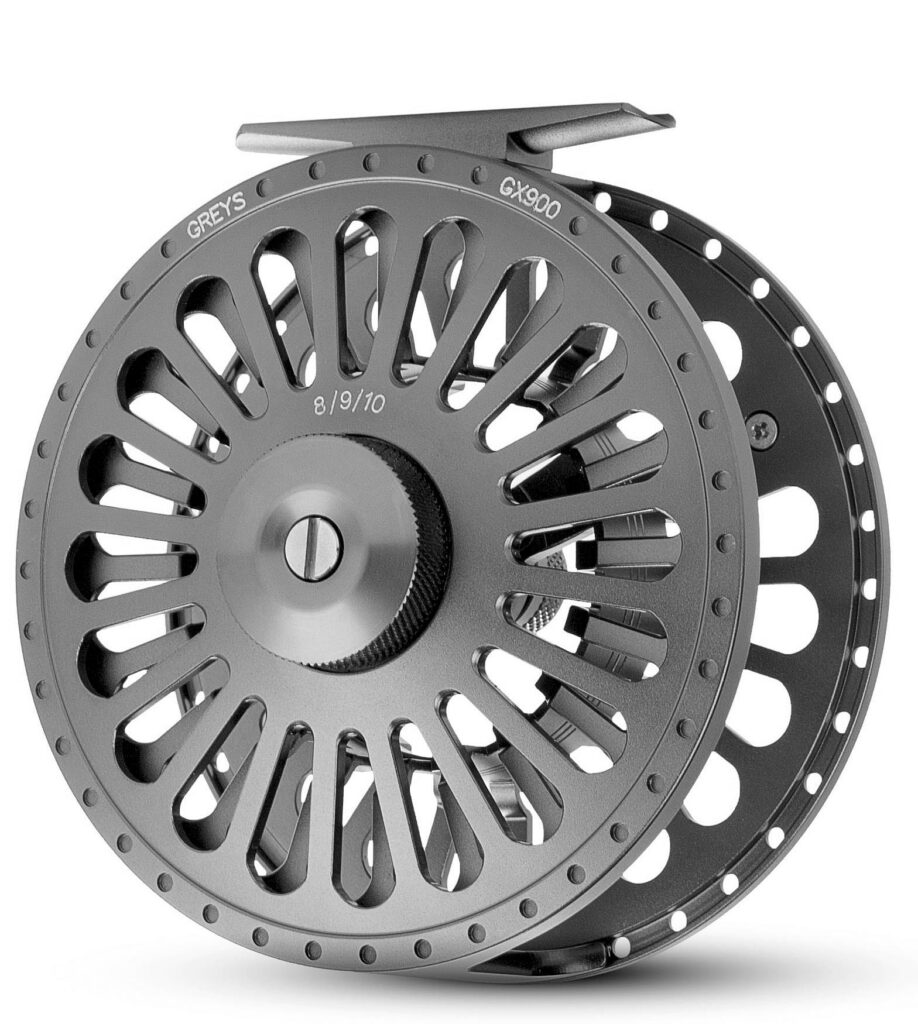
For anglers whose idea of beauty is a trout on the reel, Madison Fly Company’s model IIa is a solid-back, rather than open-back, disc-drag model, and that broad canvas is anodized in fish-skin trout-scale patterns taken from the work of a variety of artists. It’s $259.
Sage’s new 8000 series of premium big-game reels is a revamping of their earlier 6000 series and may be the ultimate fly reel for folks who like to fine tune drags. The 8000 has all the bells and whistles of a top-end large-arbor reel — superb anodizing, a great composite drag system, easy left-right conversion, a wide palming rim — with the addition of a new dual-stage drag adjustment. The outer knob moves over one turn through 20 different detented settings, and there’s a secondary knob that breaks each of those settings down into five graduated subsettings. I get dizzy just thinking of it. It’s offered in sizes from 4-3/8 inches to 5 inches for line sizes from 7 to 12 in matte black “Stealth” and charcoal brown “Storm” versions, at $750 to $850.
Sage has also replaced their medium duty disc-drag 4500 series with the new 4600 series, which has larger spools and arbors and concave inner arbors that allow greater line capacity. Like the 4500, the disc drag on the 4600 is a sealed composite cassette that, unlike most disc-drag models, is offset to the edge of the frame, where it engages the spool via a gear. Very light in weight at 4-1/2 to 5-1/2 ounces, the 4600 series is offered in four sizes from 3-3/4 inches to 4-5/16 inches for line weights 4 to 8 in both Stealth and Storm finishes. They’re priced from $375 to $450. The Cheeky company, out of Boston, is a new entrant in the market, run by a couple of guys who seem as concerned with projecting attitude as they are with making fine-fly reels. Cheeky reels are lightweight, highly relieved large-arbor designs structurally similar to many others — a look that was first introduced by Galvan a decade ago. Cheeky ups the ante in the looks and attitude department not merely by using bright anodizing colors — lots of makers do that — but with edgy model names and unique color combinations, an attempt to “infuse energy and style into the sport.” So over the company’s five models, from a 3.75-inch Stealth trout model to a 5.25-inch Dozer biggame model (with Thrash and Ambush models in between), we get a mix of orange, blue, green, gold, and silver frames and spools. Cheeky indeed. Appearance aside, the heart of these reels is still good design. Arbor diameter is large, inner arbors are concave for more capacity, and the drag is an innovative sealed, stacked design that mixes stainless and composite discs. The reels also are easy to use. Spools are changed by hand tightening a knob, and converting from left-hand to right-hand wind is as simple as flipping a bearing. Prices, given the market Cheeky chose to play in, are reasonable as well, from $340 to $460. Lots of folks at last year’s Fly Tackle Dealer Show thought Cheeky was going to be a winner.
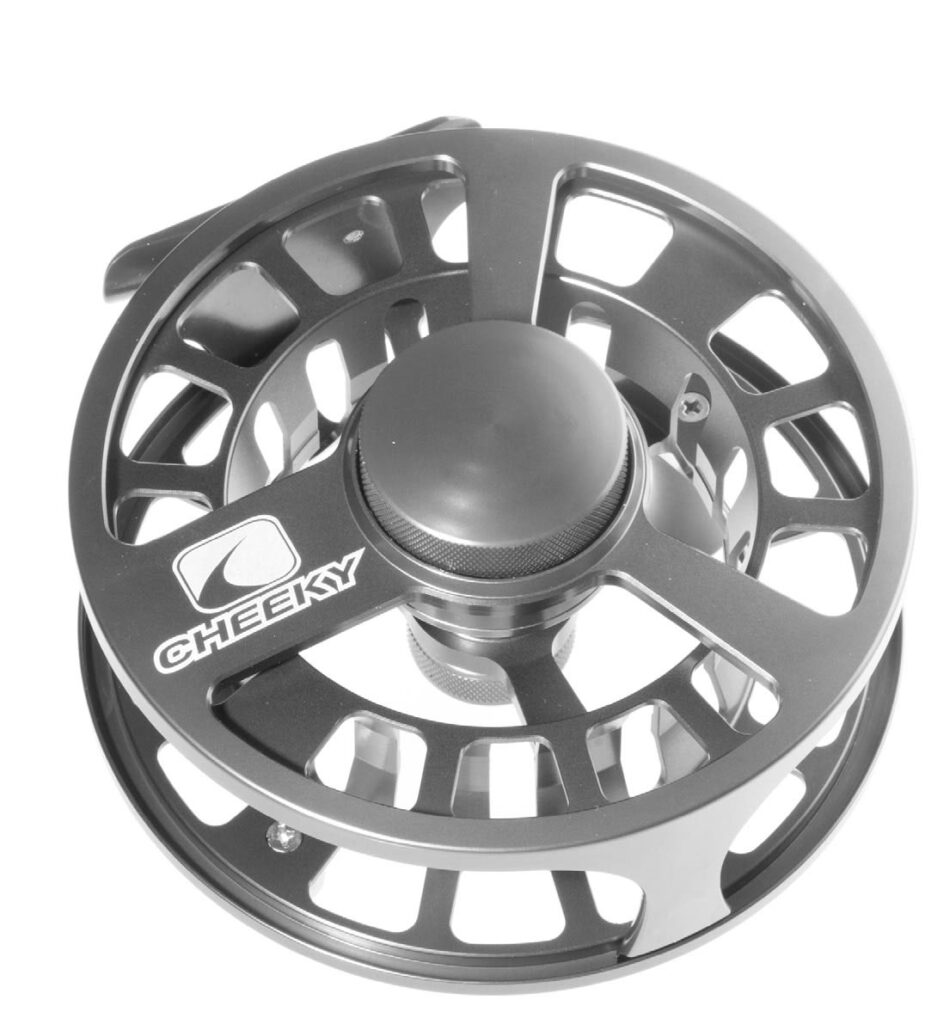
Now let’s look at some other extremes. On one end, there’s Joe Saracione’s new Islamorada saltwater reel. It’s offered in three sizes for line weights 8, 10, and 12, all with the same 4-1/2-inch diameter, but in increasing spool widths of 1.0, 1.094, and 1.156 inches. The heart of these reels is a lever-action drag control that operates from min to max within a range you can preset. The drag is of multidisc carbon fiber, designed to run “wet,” rather than be sealed and run dry. Here’s how the maker explains it: “All of the moving components are lubricated with one common lubricant which is fresh and saltwater impervious. This means that the drag can get wet, and also when it is baking in the hot tropical sun, melting lubricants that migrate into the drag discs do not adversely affect the drag settings. We designed the reel with an open, wet drag so that we could run the carbon fiber drag washers against the wet, cooling features of a spinning spool. A sealed drag traps heat and does not dissipate heat well . . . causing failure at inopportune moments.” I’m guessing there’ll be considerable debate about those claims, but Saracione’s reputation is golden, and his reels are beautiful, technically sophisticated train stoppers. They’re available in polished gold, polished silver, satin silver, and polished black for $1,200 to $1,300.
At the other end of the spectrum is L. L. Bean’s $39 Quest large-arbor reel. It has the highly relieved, ported look of more expensive reels, is made of die-cast aluminum with a Rulon disc drag, and looks pretty decent. Along with the drag, it has a palming rim, is easily converted to left-hand or right-hand retrieve, and is available in three sizes for line weights 3 through 9. It’s not something you want to bet your first billfish on, but it holds line, offers resistance to running fish, and when you want to recover line, lets you make little circles with your hand — nothing to argue with there.
New Fly Lines
RIO has come up with a new series of full-sinking fly lines with the stillwater angler in mind. The In Touch series is built around a no-stretch core that RIO calls Connect Core. The idea is to provide instant connection between the hand that’s retrieving line and the often subtle take of a fish you can’t see. I’ve not yet tried the line, but I’ve been fishing for years with one of Monic’s no-stretch intermediates and love the way it works. Along with the no-stretch core, In Touch lines are marked at 13 feet from the tip with a colored bump intended to facilitate “fishing the hang.” That’s a technique popularized by British stillwater anglers that features a very slow lift when the fly (or flies) at the end of a very long leader is right about at the point where you’d normally pick up line to recast. The lift stops most of the forward motion and lets the tippet and fly or flies slowly drop, enticing takes. The hang marker, either when it bumps the rod tip or when it contacts your stripping hand, gives you a couple of points of reference as to just how far out your fly is. Available in weight-forward tapers in line weights from 4 to 8 and in Type 3, 5, 6 and 7 sink rates, In Touch lines have tiny loops at the front end and list for $79.95.
RIO has also added a new series of sink-tip lines. Based on the company’s popular MOW tips, the new iMOW tips have an intermediate back section to gain better depth transition between the floating head and the sinking tip. They’re available in two sizes (with either T-14 or T-11 tungsten sinking tips) and in four different sink-tip lengths and densities: 10-foot clear/camo intermediate, 7.5-foot intermediate with a 2.5-foot sink tip, a 5-foot intermediate with a 5-foot sink tip, and a 2.5-foot intermediate with a 7.5-foot sink tip. They’re priced at $19.95 to $24.95.
Scientific Anglers has a new nonstretch, intermediate line — the GPX Hover — intended for cold-water situations where you want the fly to stay just below the surface, even with a slow retrieve speed. The compact head of the line is a neutral, translucent white color with a short front taper and a short back taper that transitions to a bright green floating shooting line. Available as weight-forward 5-weights through 8-weights, the Hovers, like all GPX fly lines, are half a line weight heavy for quick loading. (A 6-weight is thus a 6-1/2-weight.) They’re $79.95.
Not to be outdone, Royal Wulff has announced its own intermediate with a floating running line, built on the company’s popular front-loaded, short-head Ambush Triangle Taper. The Ambush Neutralizer has a welded front loop and Royal Wulff’s Tri D line identification system, which laser prints the line specs on the front of the line. It’s $79.95.
Airflo’s new Tropical Sniper is a warmwater version of the aggressively tapered integrated-head lines that lots of folks are fishing in place of standard weight-forward tapers or separate shooting heads. The belly and front taper are only 26 feet long, with an abrupt 2-foot back taper so line mass is pushed forward for quick rod loading and for turning over big flies. The 120-foot-long line is “ridged” for low-friction guide contact and built on a lowstretch braided core that resists tangling. There’s a floating version with a gray head and bright yellow integrated shooting line and another version with a clear 12-foot intermediate sinking tip and the same shooting line. Both Snipers feature welded loops at either end. They’re available in weight-forward 8-weights to 12-weights (which is to say 210-grain to 380-grain head weights) and are priced at $79.95.
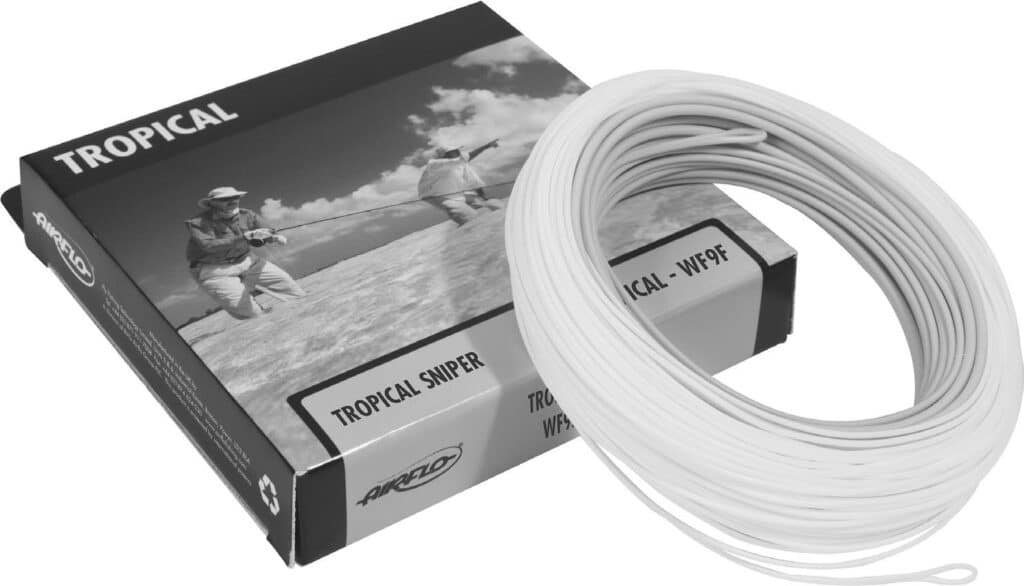
Sharkskin lines were big news from Scientific Anglers half a dozen or so years ago: high floaters that pick up beautifully and shoot easily due to a microtextured surface. Sharkskins are loved by some, but criticized by others for the noise that the aggressive surface texture makes as it runs through the guides. The company’s reaction was to introduce the Mastery Textured series, lines with a softer surface texture that still traps air to aid floatation and reduce drag on pickup and shoot. They were an immediate winner, and SA has steadily added to the Textured series. For 2012, it’s the Mastery Textured Chard’s Grand Slam Professional Custom Taper floating saltwater line. Tempting though it may be to think that the line uses a leafy green vegetable to achieve some new zenith of performance, the Grand Slam is the result of collaboration between SA designers and ace Florida saltwater guide Bruce Chard. The line’s intended use is for heavy saltwater flies, often with long leaders (think permit) and quick presentations with today’s stiff, fast rods. To that end, the Grand Slam’s belly is overweighted and short to load the rod quickly, with a very short front taper to transmit the belly mass’s energy quickly to leader and fly. An extralong back taper allows the caster to carry and control more fly line in the air than standard saltwater tapers. A thinner than usual running line facilitates shooting line. It’s $84.95.
For the Spey addicts among us, Hardy, Airflo, and RIO have some interesting new lines. Hardy’s new Mach Spey series are full lines of 120 feet with heads between 48 and 60 feet long, depending on line weight. Designed by Ian Gordon, the series consists of a full floater, a floater with a sink tip, an intermediate with floating running line, and a Type 2 sinker with floating running line. Hardy gives the working head weight of its lines only in ounces, but my trusty calculator tells me that Mach Speys are available from 550+/to 800+/grains at $89. A Mach Multi Spey line is also available with three interchangeable tips of 13 to 15 feet in length and working head weights of 500 to 750 grains. They’re $169.
Airflo’s new Spey line is a multihead shooting head system designed by Scottish Spey-casting instructor and Team Scotland competitor Eoin Fairgrieve. Ultra Spey Sets are built around two different shooting heads, both with a low-stretch core and Airflo’s supple polyurethane coating. One head is a full floater, the other a floater with an intermediate tip. The set also includes Airflo’s Ridge Running line and five 15-foot tips: floating, intermediate, and Type 3, 6, and 8 sinking. They’re available in 8/9-weight, 9/10-weight, and 10/11-weight versions. Head lengths are, respectively 39, 40, and 41 feet and weigh 600, 650, and 680 grains. Welded loops abound. Each set is priced at $269.95.
The new iFlight from RIO is a series of short Skagit heads with a length of 22 to 23 feet. The front end of the head — about 14 feet — is a clear-camo slow-sink intermediate to allow deep presentations with added sinking tips, while the back 8 feet is a pale orange floating line that’s easy to track during the swing. There are welded loops at both ends, and the line is printed with its specs near the loops. It’s available in 25-grain increments from 450 to 750 grains at $49.95. Next issue: waders and wading boots.



